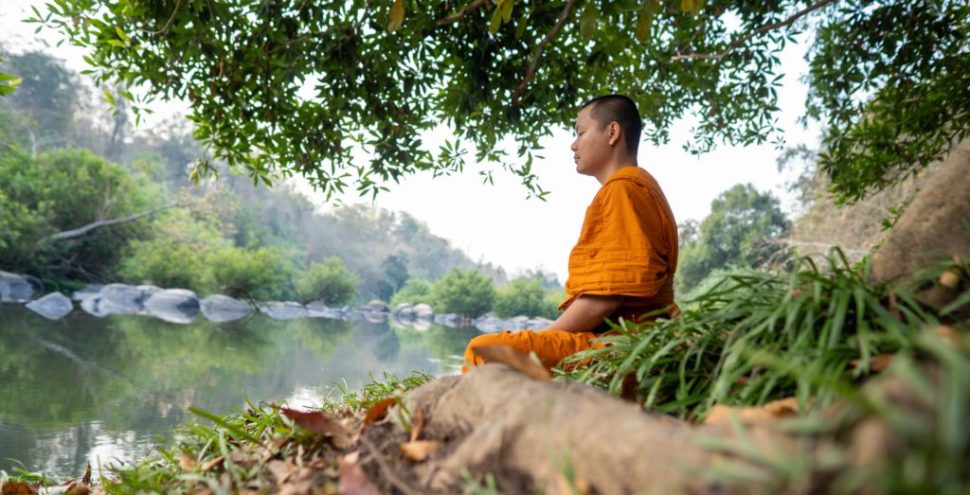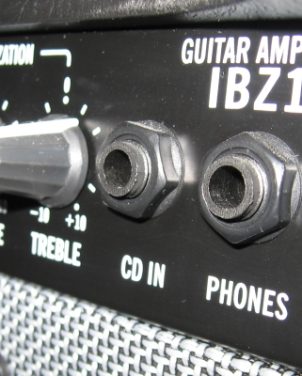Advances in medicine, widespread use of technology and scientific progresses in the treatment of diseases have all contributed to an increase in the life expectancy of the world population. Nonetheless, mental health is still a pending task, screaming for our attention, especially considering that an altered mind is the main cause for death, murders, suicides, car accidents and psychiatric illnesses, which are daily news. Then, if meditation seeks to keep the mind in calm, it is an essence that promotes healthy minds and increases life quality (Kabat Zinn y Davidson, 2013) through physical and emotional wellness.
This article presents a cross-sectional study with pre-test and post-test measures, with the objective of measuring the effects on physical and emotional well-being in the nineteen (19) participants during the five (5) days meditation retreat organized by World Peace Initiative Foundation (WPI). Therefore, this study aims to collect and record information about the effects of the meditation routine performed at a WPI retreat on physical and emotional wellness measured through the following variables: positivism and stress level, feeling of happiness and physical-emotional state.
Benefits of Meditation Proved by Studies
According to the scientific literature, we found an interesting data regarding the benefits of meditation in both physical and emotional well-being. For example, in a study we analysed that individuals with higher degrees of full consciousness (an element important in meditation) would have a greater increase in attention, subjective well-being, empathy and hope, and also showed a greater decrease in perceived stress up to one year after the intervention (Shapiro et al., 2011).
As for psychiatric and physical conditions, the benefits were studied and the results were favourable (Chiesa and Serreti, 2010). Following this line, other studies have shown effectiveness in reducing stress, anxiety and depression (Fjorback et al, 2011), as well as in different anxiety disorders (Vollestad et al, 2011; Arch et al, 2013). Healthy people were able to reduce the degree of general stress (Chiesa and Serreti, 2010, Nyklicek and Kuijpers, 2008; Praissman, 2008).
Thus, according to the review, meditation has shown good results in emotional management both for general population and psychiatric patients. In addition, efficacy has been studied in more specific diseases such as cancer, fibromyalgia, irritable colon (Mason and Hargreaves, 2001); the results have shown to cause objective changes in brain activation, immune system response, and changes in structure and brain function involved in memory, learning and emotional processes (Farb et al., 2007; Holzel et al., 2007).
Physical and Emotional Wellness
Wellness concept refers to attitudes and behaviours that improve the quality of life and helps us achieve optimal health. It is that active process aimed at improving our lifestyle in all its dimensions (Donatell, Snow & Wilcox, 1999). Then we see that the quality of life and well-being are closely related. Quality of life has assimilated subjective well-being, encompassing cognitive judgment and positive mood (Üstun et al, 2003). In turn, this is closely related to the concept of health, as expressed by the World Health Organization (1947), which conceptualizes health as a complete state of physical, mental and social well-being and not simply the absence of disease or disability. This concept refers not only to the absence of physical illness, but also expands to the set of conditions that contribute to the level of happiness or satisfaction enjoyed by an individual and to the balance between the body and mind.
Meditation and Theravada methods
Meditation can be explained in different levels but in its simplest form, meditation is the ability of the mind to stay in a single focus without wandering, thus bringing the benefits in life including happiness, not recklessness, mindfulness, equanimity and wisdom. As for the methods, in Buddhism there are three main schools, each with its own meditation methodology: Vajrayana (including Tibetan meditation practices), Mahayana (including Zen meditation) and Theravada meditation, which we used and which includes full attention of the breath. (Dhammakaya Open University, 2011).
Theravada meditation also includes its own techniques:
- Mindfulness of breathing [anapanasati]. This technique is very popular among those practicing meditation in Theravada Buddhism. Practitioners repeat the mantra “Bud-dho” in the rhythm of their breathing in and out. This method is combined with walking meditation – walking back and forth along a five to ten meter long track with drooping eyes set about four steps in front of the person. During meditation, the mind concentrates on breathing – as it enters and leaves (DOU, 2011).
- The ‘Rising and Falling’ Method. The four foundations of mindfulness, together with the concentration of the mind on the surface of one’s abdomen, as it rises and falls in time with the breath. The procedure of meditation practice includes walking meditation as well as sitting meditation with concentration in the abdominal area while repeating the word “yup-ni pong-nor” while breathing. The main purpose of all these activities is to train the mind to be aware of its mental state in the here and now (DOU, 2011).
- Practice of meditation to reach Dhammakaya. This practice method of Buddhism meditation was rediscovered by Luang Phaw Wat Paknam and is designed to allow practitioners to achieve the same experience of enlightenment known to Lord Buddha (DOU, 2011).
Materials and Methods
We present a cross-sectional study with pre-test and post-test with qualitative and quantitative data. The pre-test was administered before the first meditation session and the post-test was administered after the last meditation session.
The meditation performed was Theravada Buddhist meditation. The meditation routine was carried out four (4) times a day during the five (5) days of the retreat, with duration of one hour and a half for each session.
Meditation is defined as the state in which the mind is calm and focused. In this case, the centre of the body is taken as a focal point. During meditation, specific techniques were used to find the balance between relaxation and concentration:
Suggested posture: sitting on the floor or in a chair, with the back straight, leaning effortlessly from the base of the spine.
Relaxation: it consisted of paying attention to the parts of the body with the intention of relaxing the muscles and releasing unnecessary tensions.
Centring: it consisted of paying attention to the breath, simply observing it, with no intention of making any changes.
Staying in the centre: to help maintain the focus at the centre, we used mantra and visualization. Mantra and visualization are beneficial to the mind and help avoid distractions.
Ethical Considerations
As for the ethical aspects of the research, each participant received an explanation about the research; they were free to give their consent to participate in the study voluntarily.
Instruments
The instruments used were the questionnaire created and the symptom checklist 90 – revised, which was applied to participants five (5) days prior to the meditation retreat.
Questionnaire. A 32-item primarily close-ended instrument was used utilizing a Likert scale related to the core areas of the research. The sections of the instrument included demographics (4 items), meditation experience (10 items), feedback on positivism (7 items), stress reduction (6 items) and sense of happiness (5 items) and each item had five possible answers: 5 = Strongly Agree (SA), 4 = Agree (A), 3 = Neutral (N), 2 = Disagree (D) or 1 = Strongly Disagree (SD). A pilot test was done of the draft instrument and modifications made as necessary before it was administered to the research participants.
Symptom checklist – 90 revised. In order to evaluate the emotional and physical state before and after the five (5) days of the retreat, the inventory of symptoms SCL-90-R of L. Derogatis was used, which is widely used in research as well as in the community and clinical environment. The SCL-90-R is a self-report instrument containing 90 items and each item has five following response categories: 0 = not at all, 1= little, 2 = some, 3 = very, 4 = severe. (Derogatis and Cleary, 1977).
Participants
Nineteen (19) participants took part in the study:
- Eighty four (84 %) females and sixteen (16%) males;
- Participants were between the age ranges twenty to twenty-nine (20-29) to fifty (50) and over;
- Participants were from eight (8) countries: Argentina, Peru, Costa Rica, Colombia, Mexico, Chile, Cuba and Guatemala;
- Their occupations and job titles included: Therapists, Yoga Teachers, Consultants and Psychologists, Minister of Women Affairs, Self-Esteem Coach, Social Development Specialist, Doctor/Physician, Academic, Student and Solution Identification and Executive Trainer.
Analysis and Results
This section of the report represents the descriptive and quantitative analysis of the information that was collected through the instruments used and a comparison of the results before and after the five (5) days of the meditation retreat. The data were collected through the Inventory of symptoms SCL-90-R of L. Derogatis and another questionnaire was created and analysed descriptively using Statistical Package for the Social Sciences software (SPSS) version 20. The post-test results showed positive changes in the studied variables. However, for future studies it is suggested to extend the sample and undertake a long-term study to obtain more scientifically sound data on the effects of meditation.
Basic Demography. Nineteen (19) persons participated in the survey that was conducted at the retreat. The participants’ ages ranged from twenty (20) to over fifty (50) years; two were between twenty (20) and twenty-nine (29) years, nine were between thirty (30) and thirty-nine (39) years, five were between forty (40) and forty nine (49) years and three were fifty (50) years and over. The participants were from eight (8) different countries, with the majority coming from Mexico, Peru and Colombia. Eight (8) of the participants were Therapists, Yoga Teachers, Consultants and Psychologists, while others were the Minister of Women in Peru, Self-Esteem Coach/Owner of a Holistic Centre, Social Development Specialist, Doctor/Physician, Academic, Student and Solution Identification and Executive Trainer. Analysis of the occupations revealed that a large percentage of the participants were either employed in or associated with meditation or a complementary healthy lifestyle practice in their daily activities.
Meditation Experience. Sixteen (84.21%) of the nineteen (19) retreat participants indicated that they practiced meditation; however, the type of meditation differed. Table 1 shows the types of meditation that were practiced by the participants. Seventy-four percent (74%) of the participants have been practicing meditation for more than a year and twenty six percent (26%) for less than a year.



